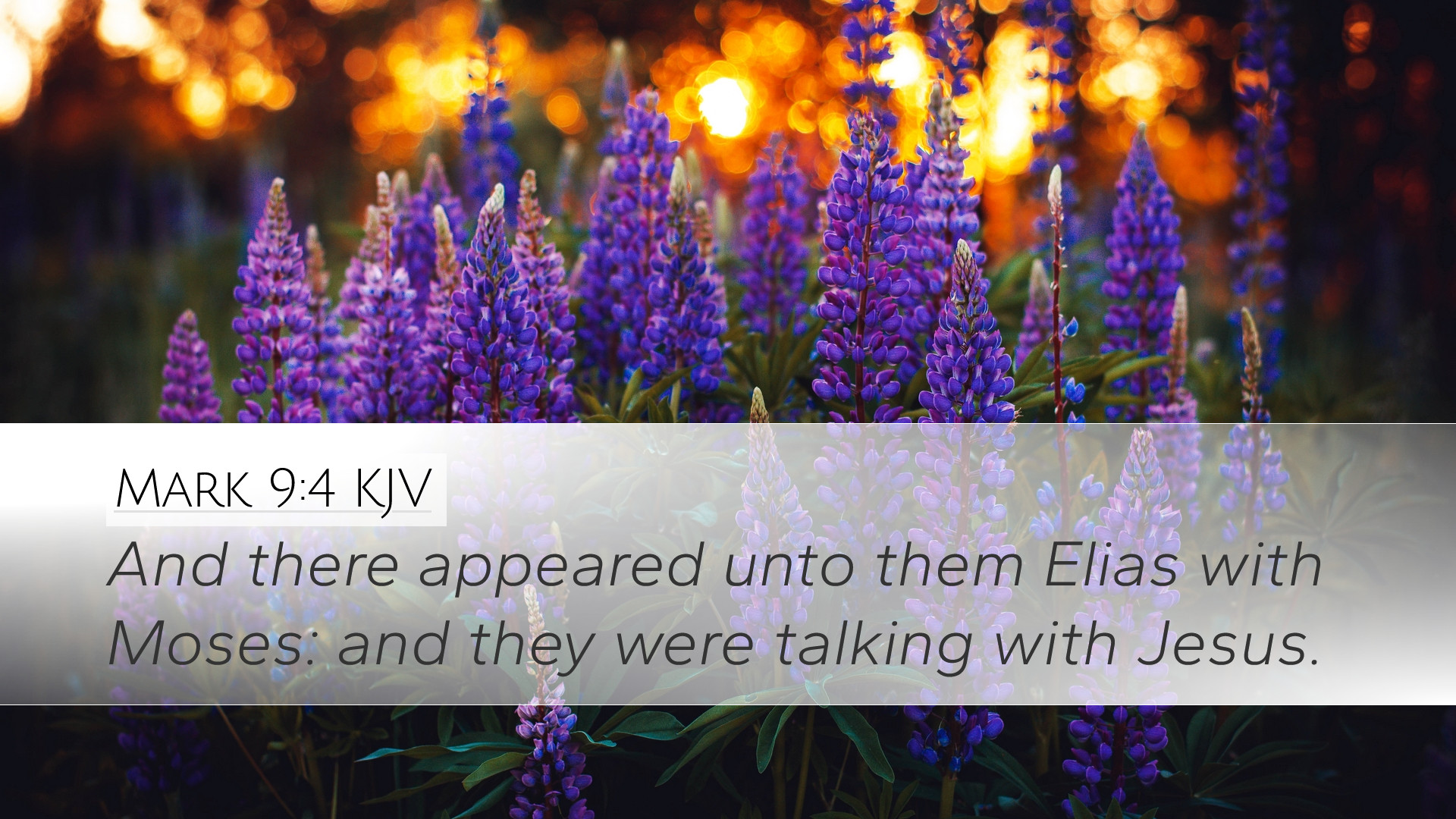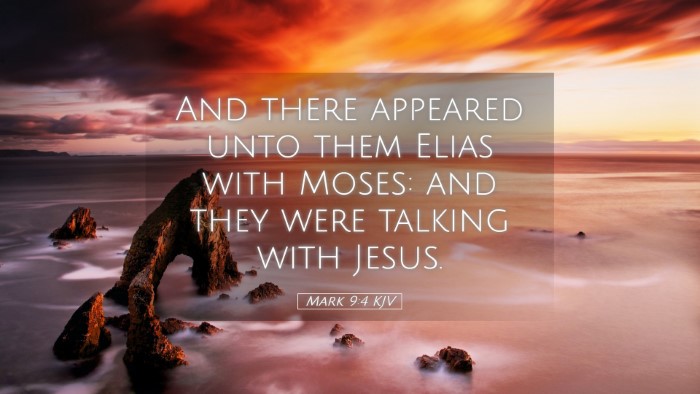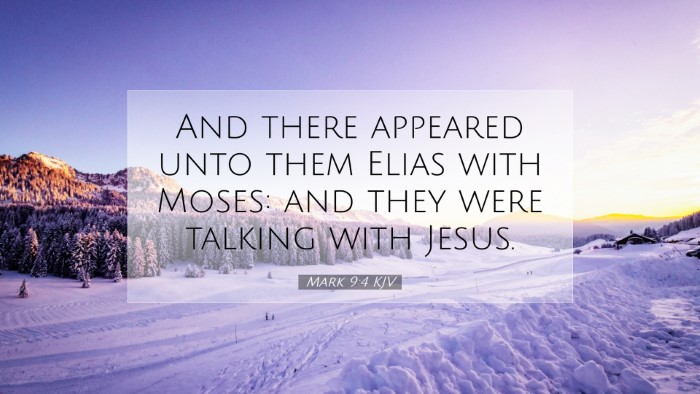Commentary on Mark 9:4
Verse: "And there appeared unto them Elias with Moses: and they were talking with Jesus."
Introduction
Mark 9:4 captures a profound moment of revelation during the transfiguration of Jesus. This event is pivotal not only in the narrative of the Gospels but also in the theological understanding of Jesus' identity and mission. In this commentary, we will explore insights from respected public domain scholars, including Matthew Henry, Albert Barnes, and Adam Clarke, to enrich our understanding of this significant passage.
Historical Context
The transfiguration occurs shortly after Jesus’ declaration of His suffering and the call to discipleship (Mark 8:31-38). The presence of Moses and Elijah symbolizes the Law and the Prophets, underscoring Jesus' fulfillment of both. This event reassures the apostles of Christ's divine nature and His ultimate authority.
The Theological Significance
This verse encapsulates a moment where divine truth intersects with human perception. Moses and Elijah represent the continuity of God's revelation.
Moses - The Lawgiver
Matthew Henry notes that Moses represents the law and the covenant made with Israel. His presence signifies the law's ultimate purpose, which is fulfilled in Jesus Christ (Romans 10:4). This shows that Christ is not an abolition of the law but its completion.
Elijah - The Prophet
Albert Barnes elaborates that Elijah represents the prophets and their call for repentance and faithfulness to God. His appearance at the transfiguration confirms Jesus' role as the promised Messiah who fulfills prophetic words and expectations
Spiritual Implications
The discourse between Jesus, Moses, and Elijah offers a rich ground for theological reflection.
The Nature of Christ
Adam Clarke emphasizes that this encounter reinforces the divinity of Jesus. In the presence of these revered figures, who themselves had profound encounters with God, Jesus is revealed not simply as a teacher but as the divine Son of God, in fellowship with God’s previous revelations.
The Response of the Disciples
The presence of Moses and Elijah raises questions about how disciples ought to respond to such revelations. Henry suggests that proper reverence and listening to the voice of Jesus are essential, as God states in Mark 9:7, “This is my beloved Son; hear him.” This emphasizes that Christ's words are supreme over the law and the prophets.
Application for Pastors and Theologians
This passage provides rich material for preaching and teaching. The confrontation between divine revelation and human understanding demands a pastoral approach that leads congregations deeper into the truth about Christ.
- Preaching Jesus: Every sermon should reflect the authority and centrality of Jesus, as illustrated in this transfiguration experience.
- Understanding the Old Testament: Students and scholars should note that the New Testament reframes our understanding of the Old Covenant through the lens of Christ's fulfillment.
- Encouragement for the Church: The presence of these two great figures encourages the church today. They remind believers of the continuity of God’s plan through history.
Conclusion
Mark 9:4 serves as a touching reminder of Christ’s majestic identity and mission within the framework of divine history. The appearances of Moses and Elijah during the transfiguration not only validate Jesus’ authority but also invite believers to engage deeply in the mystery of faith that combines continuity and fulfillment in Christ. As we study this passage, may we be motivated to proclaim the message of Jesus as the ultimate revelation of God to humanity.


